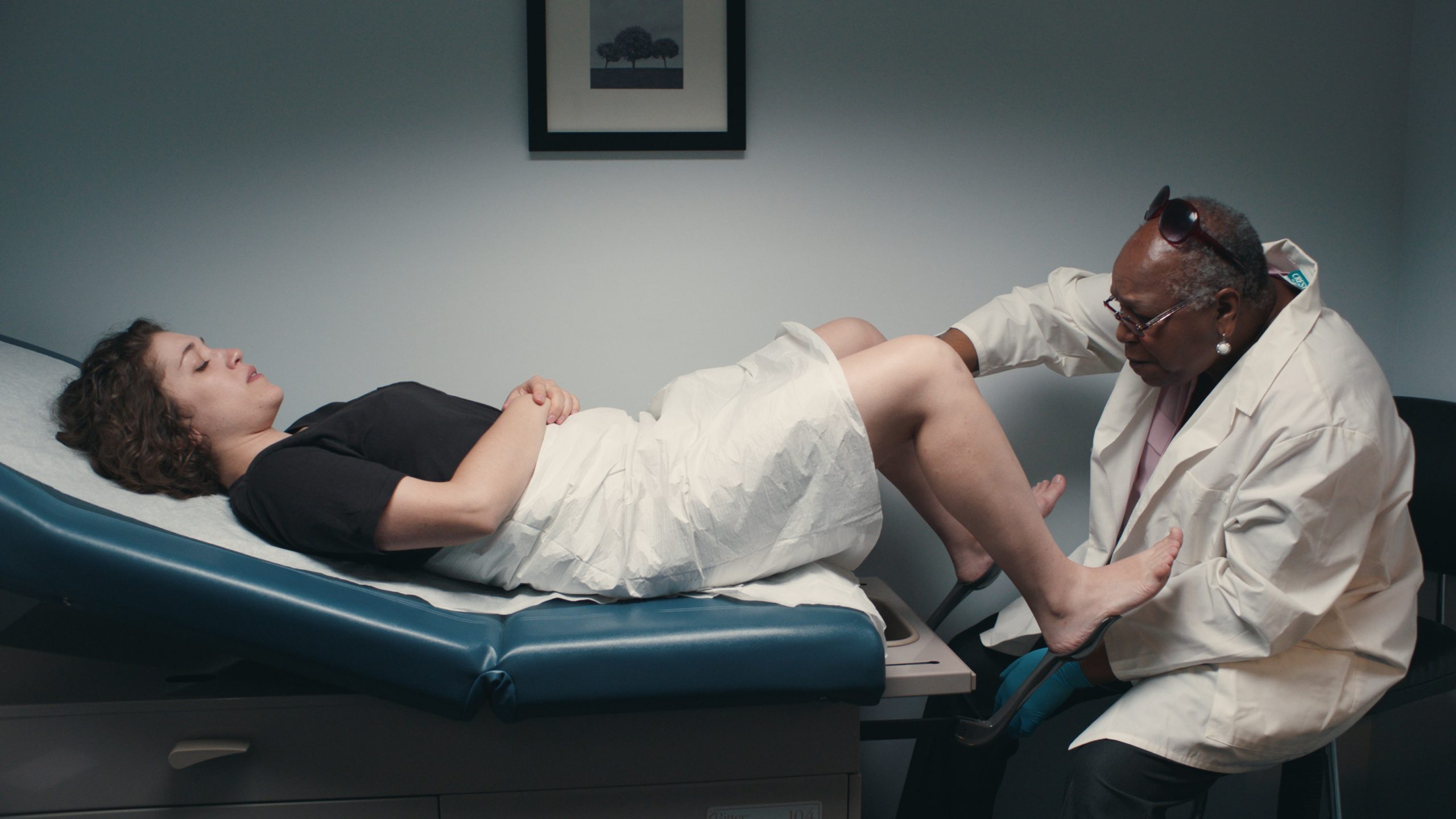Be proactive about your sexual health and minimize your risk of STIs
Our resident medical expert Dr. Julia watched “Summer Fridays” and has a few tips for viewers about how to navigate your sexual health care.
Be proactive about your sexual health and minimize your risk of STIs
In Blair Baker and Chloe Berk’s short film “Summer Fridays,” we follow Frankie as she visits her gynecologist for a cervical biopsy and endocervical sampling after finding out that she has human papillomavirus (HPV).
We don’t know Frankie’s health-care backstory, but it’s safe to assume that the path we find her on began with a conversation. An important part of taking care of one’s sexual health is to establish an open and honest dialogue with a health care provider.
Good communication can help your provider determine what screening tests are necessary. Several factors determine what tests you need and how often you need them. These include age, past medical history, what types of sex you have (if any), and the presence of any high-risk behaviors that make STIs more likely.
For their part, providers need to question patients to determine what they mean. For example, patients who are celibate typically don’t need to be screened for STIs. But different people (especially teenagers) mean different things when they say they aren’t sexually active.
Some types of sexual practices make the transmission of STIs more likely. Penetrative anal sex, co-existing STIs (like HIV), a history of STIs and multiple sexual partners place patients at higher risk of acquiring an STI. Intravenous drug use also increases risk. Patients with a history of these practices should receive more frequent and comprehensive testing for STIs.
When your provider asks you questions about sexual practices and other risk factors, they aren’t just being nosy — this is information they need to know. These conversations should take place on a routine basis as well as any time you present with symptoms or concerns about a possible STI.
Here are a few other ways to be proactive about your sexual health and minimize your STI risk.
- Get vaccinated for HPV and HBV.
- Decrease risk of exposure by using condoms with all acts of penetrative or oral sex.
- Seek routine screening for STIs, basing the frequency of testing on the sexual practices and risk factors you’ve discussed with your doctor.
- Finish recommended treatment, as prescribed, if you are diagnosed with an STI.
- Notify your partner(s) so they can receive treatment
- Consider post-exposure (PEP) and/or prophylactic (PrEP) treatment if you fall into appropriate risk categories.
Common STIs and what you need to know about testing and treatment
Human Papillomavirus
HPV is the most common sexually transmitted virus in the U.S. More than 90% of sexually active men will be infected in their lifetime, and 80% of sexually active women will be infected. More than 90% of the time, HPV infections clear on their own within a year or two without causing any problems.
There are more than 200 different types of HPV, called serotypes, but there are only a few that cause health problems, including genital warts, and cervical, vulvar and vaginal cancer in women, penile cancer in men and throat cancer in men and women. Two of the serotypes, HPV-16 and HPV-18, are the two types associated with the highest risk of cancers. HPV can be transmitted through penetrative vaginal or anal sex, oral sex and close skin-to-skin contact.
Recommendations for HPV testing vary slightly among different medical organizations. The American Cancer Society recommends beginning HPV screening at age 25 and continuing every 5 years through age 65. Other organizations, such as the American College of Obstetricians and Gynecologists (ACOG), recommend beginning screening earlier, at age 21. HPV testing can be done every 5 years in conjunction with a Pap smear.
In general, if a patient tests positive for one of the high-risk types of HPV and especially if they also have an abnormal Pap smear, they will undergo a procedure called colposcopy, which is the procedure Frankie underwent at the beginning of the film. Colposcopy involves a speculum exam (similar to a Pap smear) and is done using a magnified view of the cervix after two different solutions have been applied to the cervix that allow lesions to be seen more clearly. Biopsies of the cervix may be taken and an endometrial sampling may also be performed. The endometrial sampling–referred to a 10 second Pap smear in the film—involves scraping the inside of the cervical canal with a small brush to collect cells. Both cervical biopsies and endometrial sampling can cause cramping and/or pain that varies in intensity from individual to individual. Cramping and mild spotting and bleeding can persist for a day or two after the procedure. The biopsies will be evaluated by a pathologist and depending on the results, further procedures to remove abnormal cervical tissue may be indicated.
Again, it’s important to remember that most sexually active people will be exposed to HPV in their lifetime and in the vast majority, the virus will not cause any harm and usually resolves on its own without treatment.
To read more about HPV, check out this link to the CDC: https://www.cdc.gov/std/hpv/stdfact-hpv.htm
Chlamydia and Gonorrhea
Both chlamydia and gonorrhea may present with abnormal vaginal discharge, urinary frequency/urgency, pain with urination or pelvic cramping and pain or abnormal vaginal bleeding. Patients may also be totally asymptomatic. If left untreated, gonorrhea and chlamydia can progress to pelvic inflammatory disease (PID), which can cause severe pain, fever, chills and can cause permanent damage to the fallopian tubes. Patients with a history of pelvic inflammatory disease are at increased risk of ectopic pregnancy and of infertility. Men are frequently asymptomatic but can also experience penile discharge and urinary frequency or dysuria. Both infections can be treated with antibiotics.
Syphilis
Cases of syphilis are increasing nationally, with a 74% increase in cases since 2017. Men account for most cases of syphilis, with the majority occurring in men who have sex with other men (MSM). Though most cases occur in men, all pregnant women are routinely tested for syphilis as it can be passed congenitally to the fetus and if untreated can result in devastating fetal outcomes, including stillbirth, preterm birth and neonatal death.
Syphilis varies in its presentation, depending on the stage at the time of presentation and symptoms can go unnoticed. For this reason, routine screening (at least annually) is recommended for those at high risk, including MSM, those involved in sex work, and incarcerated individuals. First stage syphilis can present with a large, painless sore on the genitals, called chancre. The second stage of syphilis usually presents with a rash spreading over the palms of the hands and soles of feet. Tertiary, or late stage syphilis, occurs 10-30 years after infection and can affect the brain, nerves, heart and eyes, and can be fatal. Syphilis can also be treated with antibiotics, though longer treatment courses are required if it is not diagnosed until the later stages.
Trichomoniasis
Commonly referred to as “Trich”, is asymptomatic in many people. It can also cause foul-smelling vaginal discharge and itching or burning. It is important to treat trich because an untreated infection can increase the risk of acquiring additional STIs. Trich can also be treated with medications.
Herpes Simplex Virus (HSV)
There are two types of Herpes viruses, Herpes simplex virus type 1 (HSV-1) and Herpes simplex virus type 2 (HSV-2). They are similar and both cause blister-like sores that can occur around your mouth, lips and throat, referred to as “oral herpes” and around your genitals, referred to as genital herpes. HSV-1 usually causes oral herpes while HSV-2 usually causes genital herpes. Both viruses are caused during skin-to-skin contact while kissing or during oral, anal or vaginal sex. Herpes is extremely common; over half of all Americans have oral herpes, while 1 in 6 have genital herpes. Once you have herpes, the virus remains in your body for life. People typically have recurrent outbreaks periodically, sometimes brought on by stress. While there are no meds to cure herpes, there are anti-viral medications that can shorten the course of an outbreak.
HIV
Human immunodeficiency virus (HIV) is a sexually transmitted virus that attacks the body’s immune system, making it susceptible to other infections and some cancers. If left untreated, HIV can progress to Acquired Immunodeficiency Syndrome (AIDS). HIV is acquired through exposure to infected bodily fluids, including blood, semen and vaginal fluid. There is no cure for HIV, however, there are extremely effective anti-retroviral medications that can be taken to suppress the virus, often to the point where it is no longer detectable in the blood (though it is still present at very low levels). When HIV levels are undetectable, the ability to transmit the virus is greatly reduced. There are also medications referred to as PEP, which stands for post-exposure prophylaxis, which can be used in emergency situations where people may have been exposed to HIV. PEP can markedly reduce the likelihood of acquiring HIV after an unexpected exposure. For situations where individuals know they may be likely to be exposed to HIV, there are additional medications called PrEP, which stands for Pre Exposure Prophylaxis that can be taken prior to the exposure which markedly reduce the risk of acquiring HIV.
Hepatitis B (HBV) and Hepatitis C (HCV)—both HBV and HCV are viruses that affect the liver. Both are commonly spread by sharing needles during IV drug use but can also be spread prenatally from mother to baby and during sexual activity. Vaccination is the best way to prevent transmission of HBV and the vaccine is now recommended for all infants and children and for adults from ages 19-59 and 60+ if high risk factors present. There is no vaccine for HCV, however, antiviral treatments exist that can cure the virus in approximately 97% of people.
To read more about specific recommendations for screening based on age and sexual practices, check out this link to the CDC website: https://www.cdc.gov/std/treatment/default.htm

Our resident expert Dr. Julia Arnold VanRooyen is here to answer all of your rePRO questions!
Simply fill out the form below - you may remain anonymous if you choose - and she'll answer them in our bi-monthly Periodical emails and social media channels. Leave your question below!




